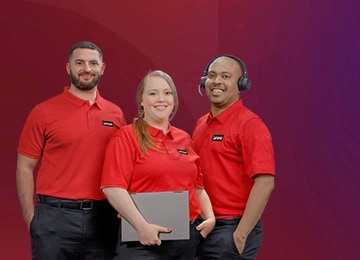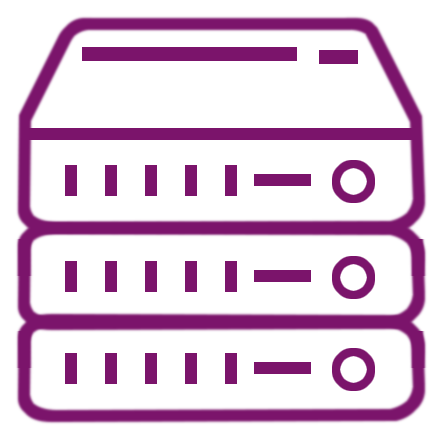What is Edge to Cloud?
Edge to Cloud is a distributed architecture that connects data processing at the edge of networks with centralized cloud resources. Edge devices, such as IoT sensors or edge AI systems, perform local computations to reduce latency, while the cloud provides scalable storage, analytics, and orchestration. This approach enables organizations to handle real-time data processing at the edge, maintain centralized control, and leverage insights across the enterprise.
What is Edge AI?
Edge AI refers to AI models deployed on edge devices, allowing real-time data analysis and decision-making without relying on cloud latency. In an Edge to Cloud system, edge AI performs immediate processing, while the cloud aggregates and analyzes data at scale. This combination balances speed, reliability, and scalability, enabling organizations to respond quickly to events while maintaining enterprise-wide insights and control.
Why is Edge to Cloud important for businesses?
Edge to Cloud allows businesses to process data closer to its source, improving speed and reducing network dependency. It enables real-time insights through edge AI, minimizes bandwidth costs, and provides centralized management through the cloud. Organizations can deploy AI-driven applications faster and with greater reliability. By bridging edge devices and cloud infrastructure, businesses can enhance operational efficiency, support enterprise-scale analytics, and accelerate digital transformation initiatives.
What are the key components of an Edge to Cloud platform?
An Edge to Cloud platform integrates local data processing with centralized cloud capabilities to deliver real-time intelligence and scalability.
4 Key components of an Edge to Cloud platform:
- Edge devices: Sensors, cameras, or IoT devices performing local data processing.
- Edge AI models: Embedded intelligence enabling immediate decision-making.
- Cloud infrastructure: Centralized storage, analytics, and orchestration capabilities.
- Connectivity layer: Secure and reliable data transfer between edge and cloud.
These components work together to deliver a seamless edge-to-cloud experience.
What are the benefits of Edge to Cloud?
Edge to Cloud adoption enables organizations to balance real-time processing with scalable analytics.
Key benefits of adopting an Edge to Cloud model include:
- Low latency: Immediate processing at the edge for real-time applications.
- Reduced bandwidth usage: Only relevant data is sent to the cloud.
- Scalability: Cloud resources support large-scale analytics and storage.
- Enhanced reliability: Distributed processing reduces dependency on a single system.
These benefits enable organizations to optimize operations, support edge AI deployment, and integrate insights across the enterprise.
How does Edge to Cloud support enterprise AI adoption?
Edge to Cloud allows enterprises to implement AI at the edge while maintaining centralized control and analytics in the cloud. This hybrid approach accelerates deployment of AI-driven solutions, provides real-time insights, and supports scalable model management. By combining local intelligence and cloud orchestration, enterprises can enhance operational efficiency, improve decision-making, and integrate AI seamlessly into existing workflows.
What challenges exist in Edge to Cloud deployments?
Challenges include managing data security, ensuring consistent connectivity, and integrating diverse edge devices with cloud infrastructure. Organizations must handle heterogeneous hardware, different communication protocols, and variable network conditions. Additionally, maintaining edge AI models and balancing local versus centralized processing can be complex. Addressing these issues is key to deploying reliable and efficient edge-to-cloud systems.
How does Edge to Cloud improve latency and performance?
Edge to Cloud reduces latency by processing data locally on edge devices instead of transmitting everything to the cloud. Immediate decision-making occurs on-site using edge AI models, while the cloud handles bulk analytics and storage. This hybrid processing ensures fast responses, reduces network congestion, and improves overall system performance, making it ideal for time-sensitive applications.
What is the role of connectivity in Edge to Cloud?
The connectivity layer ensures secure, reliable, and efficient data transfer between edge devices and cloud infrastructure. It manages data synchronization, handles network interruptions, and supports real-time streaming for edge AI applications. Effective connectivity is essential for integrating local processing with cloud analytics, maintaining performance, and enabling enterprise-scale edge-to-cloud adoption.
How does Edge to Cloud impact data privacy and security?
Edge to Cloud enhances data privacy by processing sensitive information locally, reducing exposure to cloud transmission risks. Security measures, including encryption, access controls, and secure communication protocols, safeguard data both at the edge and in the cloud. This distributed approach supports compliance with regulatory requirements while maintaining operational efficiency.
What infrastructure is needed for Edge to Cloud?
Building an effective Edge to Cloud environment requires the right combination of hardware, software, and connectivity.
4 Key infrastructure components for Edge to Cloud:
- Edge hardware: Sensors, cameras, or IoT devices capable of local processing.
- Edge AI models: Lightweight, optimized for low-power devices.
- Cloud resources: Scalable storage, analytics engines, and orchestration tools.
- Networking: High-speed, reliable connections between edge and cloud components.
Proper planning ensures robust performance and supports enterprise-scale adoption.
How does Edge to Cloud support real-time analytics?
Edge devices perform immediate computations using edge AI models, while the cloud aggregates data for broader analysis. This combination enables real-time monitoring, alerting, and automated decision-making. Organizations can respond instantly to events at the edge while leveraging cloud insights for strategic planning and predictive analytics.
What are the cost considerations for Edge to Cloud?
Edge to Cloud adoption requires investments in edge devices, AI models, networking infrastructure, and cloud resources. However, it can reduce long-term costs by minimizing data transmission, optimizing resource usage, and enabling predictive maintenance. The hybrid approach balances upfront expenditure with operational efficiency and scalability.
How can organizations scale Edge to Cloud?
Organizations can scale by adding more edge devices, deploying cloud resources elastically, and standardizing AI models and data pipelines. Automated model updates and centralized orchestration simplify the management of distributed devices. This approach allows enterprises to expand deployments while maintaining consistent performance and reliability.
What is the role of AI orchestration in Edge to Cloud?
AI orchestration manages model deployment, updates, and data flow across edge and cloud environments. It ensures that edge AI models remain synchronized, updates occur without downtime, and analytics pipelines operate efficiently. Orchestration enables seamless integration of edge and cloud capabilities for enterprise applications.
How does Edge to Cloud differ from traditional cloud?
Unlike traditional cloud, where all data is sent to centralized servers, Edge to Cloud processes data locally at the edge before leveraging cloud resources. This reduces latency, saves bandwidth, and enables real-time decision-making. The hybrid approach offers greater efficiency, scalability, and responsiveness.
What are common failure points in Edge to Cloud systems?
Common failure points include network disruptions, hardware incompatibilities, outdated AI models, and data synchronization issues. Inadequate monitoring or poor orchestration can also disrupt operations. Identifying and addressing these risks during deployment is critical for reliable edge-to-cloud performance.
How is ROI measured for Edge to Cloud?
ROI can be measured by reductions in latency, improved operational efficiency, bandwidth savings, and increased productivity. Additional metrics include improved decision-making speed, reduced downtime, and cost avoidance through predictive maintenance. Tracking these metrics helps justify investment and supports enterprise adoption.
What best practices support Edge to Cloud adoption?
Successful Edge to Cloud implementation depends on careful planning and execution.
Key best practices for adopting Edge to Cloud are listed below:
- Clear architecture planning: Defining the integration between edge devices and cloud.
- Edge AI optimization: Ensuring models are lightweight and efficient.
- Data governance: Managing data privacy and compliance.
- Orchestration and monitoring: Maintaining synchronized AI and data pipelines.
Following these practices improves reliability, scalability, and enterprise-wide adoption.



